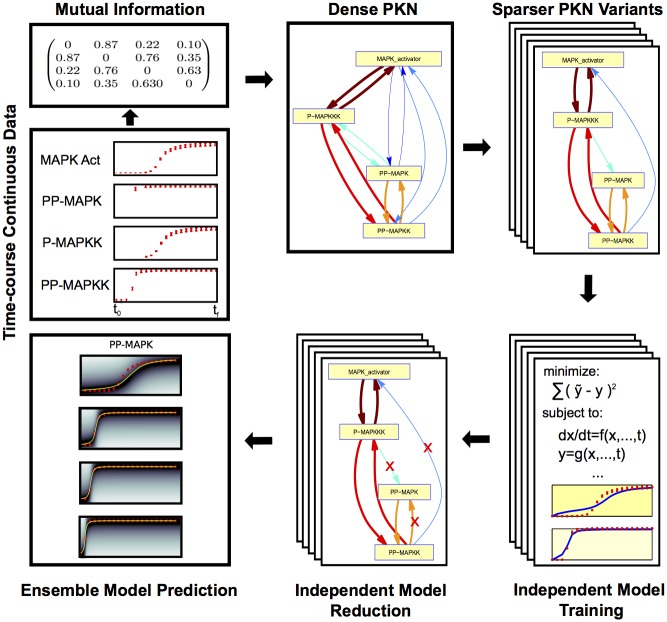Fig 1. SELDOM workflow.
The experimental data is used to build an adjacency (a dense DDN) matrix based on the mutual information of all pairs of variables. Through a simple sampling scheme, and limiting the maximum in-degree for each node, a set of more sparse DDNs are generated. Each individual DDN is then used as a scaffold for independent model training and model reduction problems. The resulting models are used to form an ensemble which is able to produce predictions for state trajectories under untested experimental conditions.

